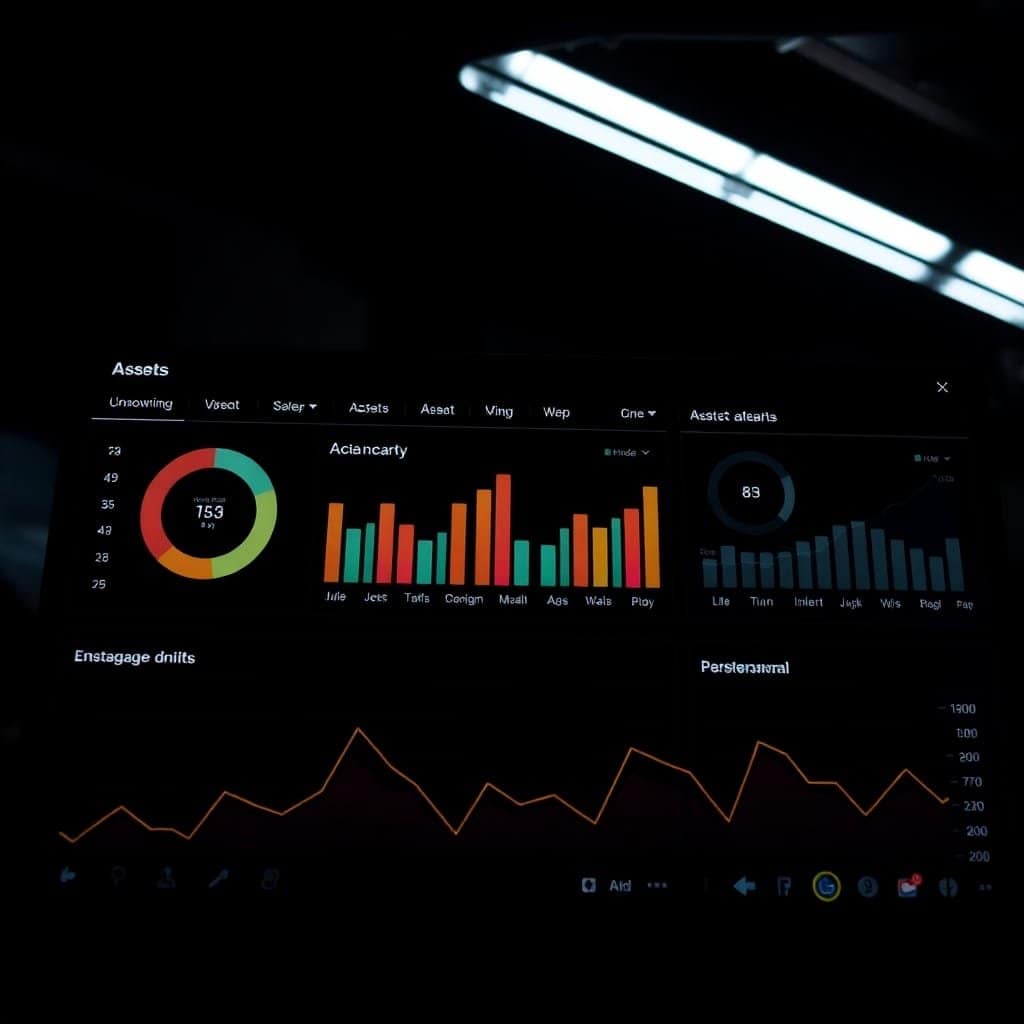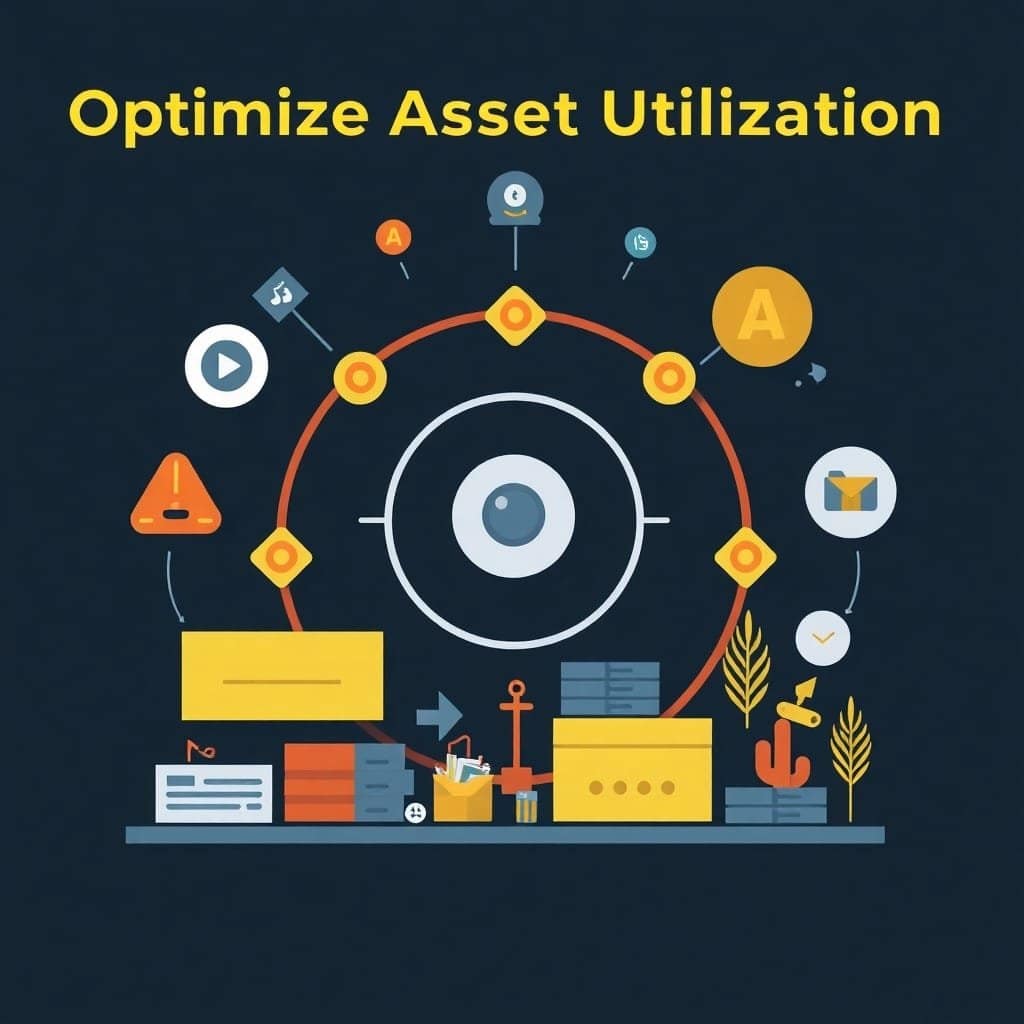Current and Upcoming Trends in Enterprise Asset Management
Asset Management
Managing assets effectively is crucial for large organizations dealing with hundreds or thousands of physical assets. Enterprise Asset Management (EAM) software has emerged as an indispensable tool for tracking, maintaining, and optimizing asset lifecycles. In this article, we’ll discuss the latest trends shaping asset management, how modern solutions address critical pain points, and why businesses must adapt to these technologies.
AXIS Gatepass provides a feature packed Enterprise Asset Management Software (EAM) to effectively manage your valuable IT Assets. Contact us for a no-obligation Demo, detailed requirement analysis, proposed solution, cost and implementation plan.
What is Enterprise Asset Management Software?
Enterprise Asset Management (EAM) software enables organizations to manage the entire lifecycle of their physical assets—from acquisition and operation to maintenance and disposal. It ensures real-time visibility, accurate tracking, and regulatory compliance.
Challenges in Traditional Asset Management

- Difficulty tracking asset location, usage, and condition.
- Manual errors and inefficient reconciliation processes.
- High maintenance costs due to reactive servicing.
- Non-compliance with industry audit standards.
Modern EAM systems eliminate these challenges, making asset management more streamlined, accurate, and data-driven.
Current Trends in Enterprise Asset Management
1. End-to-End Lifecycle Management
Asset management systems now focus on the entire lifecycle of assets:
- Asset Acquisition: Easy importing of existing asset registers via Excel spreadsheets.
- Tagging and Tracking: Generate QR codes or RFID tags for accurate tracking of assets.
- Assignment and Monitoring: Allocate assets to employees, departments, and physical locations with digital logs.
- Periodic Reconciliation: Conduct seamless asset checks using handheld devices.
- Disposal and Reporting: Identify and record lost, damaged, or scrapped assets.
2. Asset Tagging
- QR Code Tagging: Ideal for quick tagging and physical scanning of assets.
- RFID-based Asset Reconciliation:
- Using RFID readers, organizations can scan and reconcile multiple assets in a specific area, saving time during inventory checks.
- The process ensures no asset goes unaccounted for.
- Geo-Tagging: Geo-tagging an asset informs the last stored geographical location of your asset. This can be an extremely useful feature in locating your Assets, especially your missing and untraceable Assets. Geo-tagging your assets is a powerful tool for enhancing the visibility, security, and efficiency of asset management.
3. Compliance and Audit-Ready Reports
EAM systems simplify compliance reporting by:
- Generating audit-ready reports automatically.
- Providing real-time insights into asset status, usage, and maintenance schedules.
4. Automation in Reconciliation and Tracking
Modern EAM tools automate:
- Reconciliation: Digital tools replace manual asset verification, reducing errors.
- Alerts: Notifications for assets requiring maintenance or nearing lifecycle end.
Upcoming Trends in Enterprise Asset Management
1. IoT Integration for Real-Time Monitoring
The Internet of Things (IoT) is revolutionizing asset management:
- Sensors track asset location, condition, and performance in real time.
- Predictive data helps organizations preemptively address asset failures.
2. Predictive Maintenance Using Artificial Intelligence
AI and machine learning enable organizations to predict asset wear-and-tear, reducing unplanned downtime and maintenance costs.
3. Cloud-Based Asset Management
Cloud-enabled EAM solutions offer:
- Access to asset data anytime, anywhere.
- Seamless collaboration across departments.
4. Mobile-First Asset Management
Mobile applications allow teams to:
- Scan assets using smartphones.
- Update asset status and maintenance logs on the go.
5. Advanced Data Analytics
EAM systems now include advanced data analytics for better decision-making:
- Identifying underutilized or over-utilized assets.
- Generating insights on lifecycle costs and ROI.
How EAM Software Addresses Enterprise Pain Points
A modern EAM system helps large organizations:

Track Lost or Damaged Assets: QR codes and RFID tags enable precise tracking.

Simplify Compliance: Generate accurate reports for internal and regulatory audits.

Improve Asset Reconciliation: Digital tools ensure error-free inventory checks.

Enhance Visibility: Real-time dashboards provide insights into asset location, usage, and condition.

Optimize Asset Utilization: Identify assets that need redistribution, maintenance, or disposal.
Why SMG Infosolutions’ Asset Management Software is a Game-Changer
SMG Infosolutions’ Asset Management Software is designed to address the challenges large organizations face with asset management:
- Easy Setup: Import your current asset register using Excel files and get started quickly.
- Efficient Asset Tagging: Generate QR codes and RFID tags for seamless asset tracking.
- Simplified Reconciliation: Periodic reconciliation using handheld devices ensures accurate, up-to-date records.
- Compliance Reports: Generate audit-ready reports effortlessly.
- Lifecycle Management: Manage assets from acquisition to scrapping.
Whether you’re tracking thousands of IT assets, vehicles, or machinery, SMG Infotech’s solution simplifies asset management while improving operational efficiency.
Conclusion
Enterprise Asset Management software is no longer a luxury—it’s a necessity for organizations aiming to optimize their asset usage, reduce maintenance costs, and ensure compliance. Emerging technologies like IoT, RFID, and AI are redefining how businesses track and maintain their assets.
By adopting a powerful, user-friendly EAM system like SMG Infosolutions’s Asset Management Software, enterprises can transform their asset management processes, drive efficiency, and make smarter decisions.

